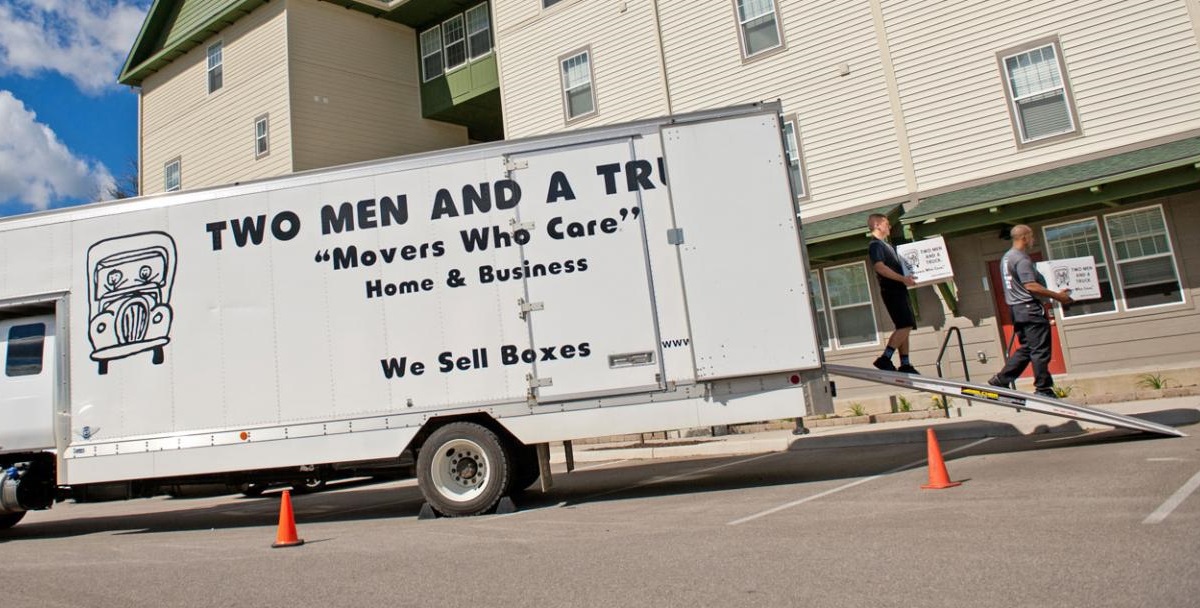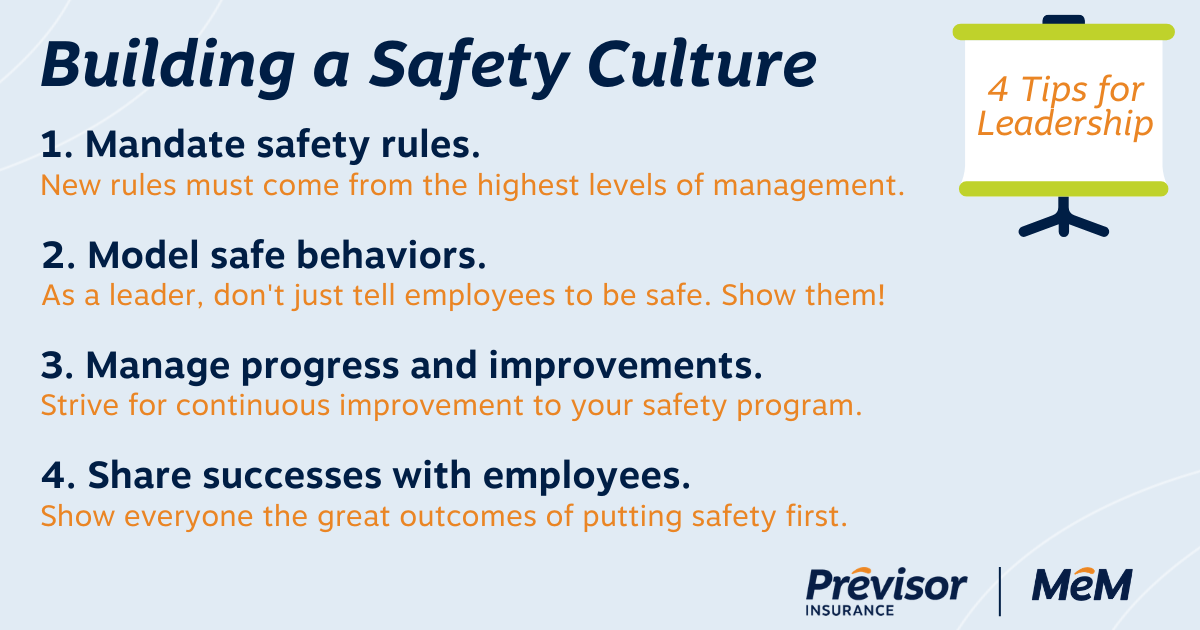Leadership support is the key to creating a workplace safety culture. If management isn’t invested in safety, then it can be hard to develop a safety culture. How can business owners encourage investment in safety from the top down? What strategies can they use to help employees engage in safety training, and practice better behaviors?
On this episode of the WorkSAFE Podcast, we sit down with Clint Bergman. He is the General Manager and Co-Franchisee at Two Men and a Truck. The moving company operates locations nationwide. Bergman oversees locations in Springfield and Branson, Missouri. He began his time there as a mover, then a driver, and has experience in every aspect of the business. For him, safety applies to every area of the company – not just those out on the job.
First, we’ll talk about what motivated Bergman to take on building a safety culture at the company. Then, we’ll share the first steps business owners can take to make a change. Finally, we’ll discuss some strategies for those struggling to get management buy-in.
Listen to this episode on the WorkSAFE Podcast, or read the show notes below.
Investing in safety culture: the first steps
When Bergman first stepped into a leadership role at Two Men and a Truck, he was ready to make changes across the business. He admits he has a competitive streak. Winning was a priority. His team tackled one area of the business at a time. Once they reached their goals, they would move on to the next area.
However, the company didn’t have great safety results. Bergman wanted to win in the area of safety, too. As a result, it was easy for him to dive in. But he made an important discovery early on. “We realized really quickly that if safety is not the most important thing that we’re doing, then it can sink our battleship as a business in many different ways.”

Financial investment
Many business owners worry about costs. At Two Men and a Truck, Bergman made a decision. The initial investment would be worth it. Above all, they would save money in the long run.
“The expression ‘it pays to be safe’ is very true,” Bergman added. Better safety means fewer injuries and medical costs. Fewer incidents also mean a lower e-mod factor. As a result, premium costs go down.
Cultural investment
Investing in the safety of employees isn’t just about the business. “Employees need to smell the same air that you’re smelling,” Bergman emphasized when it comes to safety, “And breathe the same air you’re breathing.”
Bergman knows safety on the job improves quality of life. The most important thing is that employees know their leadership cares about them as people – and values their health and safety.
Employees need to be well-taken care of in Bergman’s opinion. For instance, injuries on the job may mean back and shoulder pain at night. As a result, employees won’t rest well. If they aren’t in the best shape for the job, then they put others at risk. Moreover, they can’t enjoy their time on – or off – the job.
Having fewer incidents raises employee morale. Employees work knowing that their safety and well-being are valued.
Building a safety culture: 4 tips for leadership
Implementing safety changes doesn’t build a safety culture overnight. It means changing the mindsets of management and employees over time. Importantly, these changes need to begin at the management level. Bergman offers other business leaders four tips to encourage buy-in.
- Mandate safety changes. These new safety rules and policies must come from the highest levels of management.
- Model it. Show, don’t tell. Employees need to see their management and leaders practicing new behaviors.
- Manage it. Take responsibility for implementing safety measures. Monitor progress. Where can more improvements be made?
- Materialize it. Share safety information for your industry. Show employees what working safely means. What good outcomes can they expect from new safety practices?

Start with compliance
Compliance is a great place to start when figuring out the right safety measures for your workplace. Bergman recommends finding all the areas of authority for your industry. What are their standards? Is your business in compliance with those standards? If they were to do an audit, would your business be ready?
Get creative: engaging employees in safety culture
Bergman finds that putting in extra effort when it comes to safety pays off. Business owners need to get creative. How can you engage employees? For example, safety posters are an easy place to start. “It’s not enough just to have the posters, add some flavor to the posters,” he recommended. “Get employees engaged on creating the posters.” Turn safety into something everyone can join in on. This helps it touch every area of the job.
Try new things
“A lot of our meetings are at 7 in the morning. Some people haven’t had their coffee, some woke up at 6:45, who knows!” Bergman admitted. But if you can start the day with something competitive or engaging, then employees can enjoy learning about safety.
Try new things in regular safety meetings. Bergman uses the following ways to engage staff at Two Men and a Truck:
- Get people involved. Let employees be the teachers. Allow them to guide safety discussions. In addition, assign someone to help run the technology.
- Ask good questions. Employees experience different situations on the job. Have they ever encountered a safety hazard or risky situation? What could they have done differently? Be patient. Let everyone have a voice.
- Play games. Add a little excitement to a regular meeting. Employees can participate in quizzes and games using their smartphones – try Kahoot for a free option.
- Hold people accountable. Share a short quiz or worksheet. It will help employees stay engaged. Some may not get all the answers right. But it’s important for them to work towards better scores.

3 ways company leadership can invest in safety today
Some companies struggle to have conversations about safety. Even if employees are willing to change, leadership may not understand the difference working safely can make. “Not every company’s safety program is created equally,” Bergman added. “Not every company’s safety manager, if there is one, is created equally, as well.”
It’s important to understand the benefits and consequences when it comes to safety. Bergman shared three ways leadership can prioritize safety:
- Create consequences. Every employee – from the top down – needs to follow safety rules and expectations. Not following them can result in write-ups, suspensions, or even financial penalties.
- Add safety to performance reviews. Hold employees accountable for working safely. A great safety record lends support to a raise. A poor safety record can start a conversation on how to improve.
- Show incentives. What are the positive results for working safely? Show employees the benefits. Fewer claims and injuries are reasons to celebrate – and to continue working safely.
Safety is everyone’s job
For Bergman, creating a safety culture isn’t just one person’s job. Above all, company leaders drive change. Supervisors and managers support it. Employees make those changes happen. Everyone plays a role. In order to create a safety culture, everyone has to participate. “They have to make a decision: are they going to jump in the boat, or out of the boat?” He explained. “And you have to give them the opportunity to do that.”
For more information on creating safety rules and educating employees, visit our Resource Library. Then, tune in to our latest WorkSAFE Podcast episode on keeping employees safe on the road.